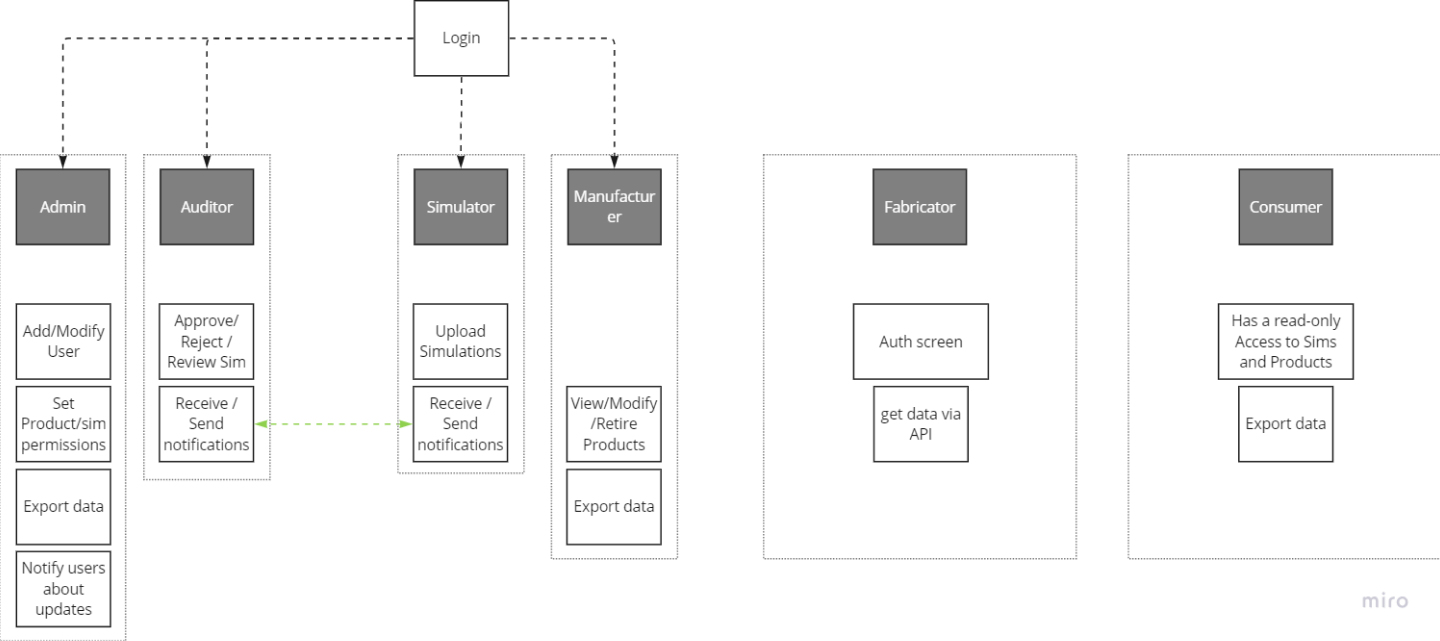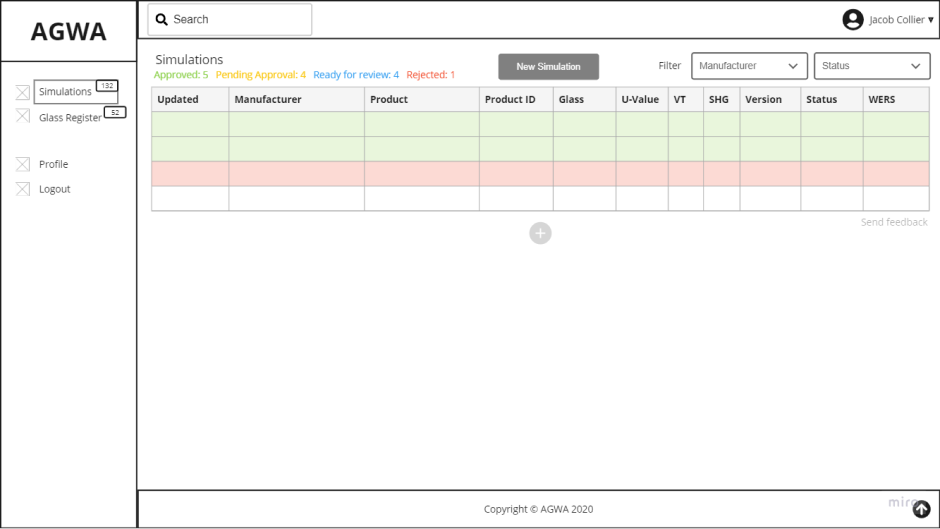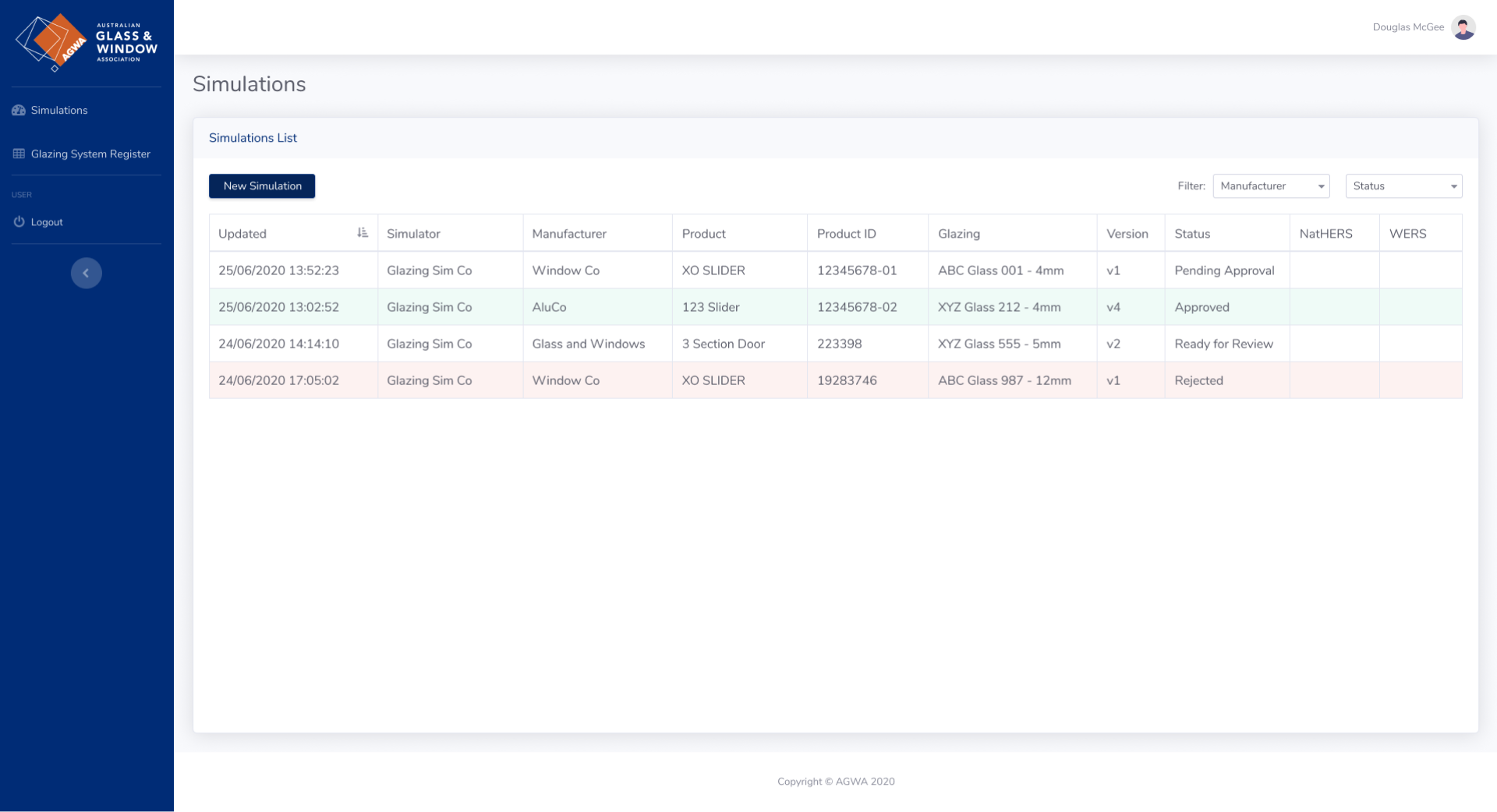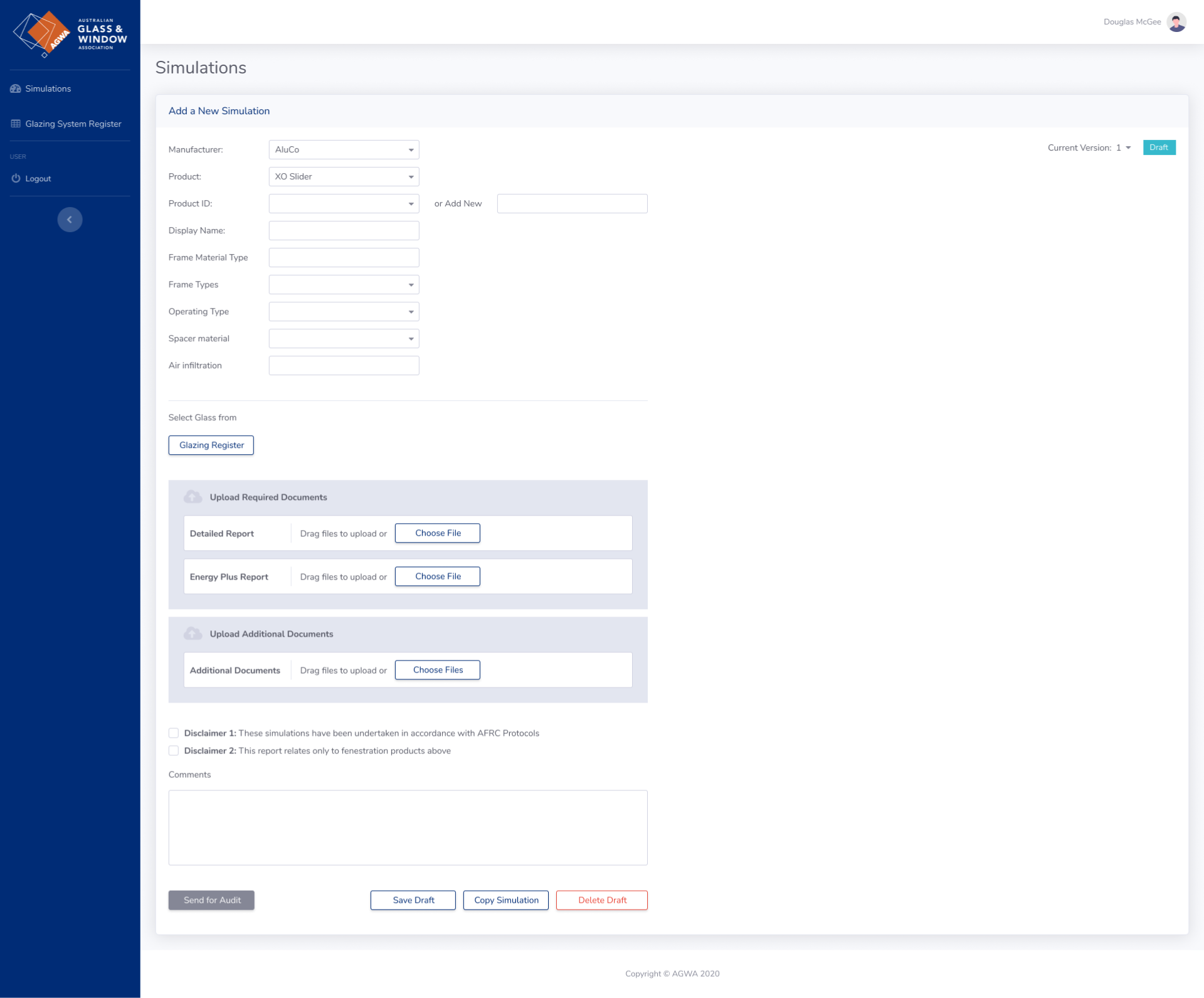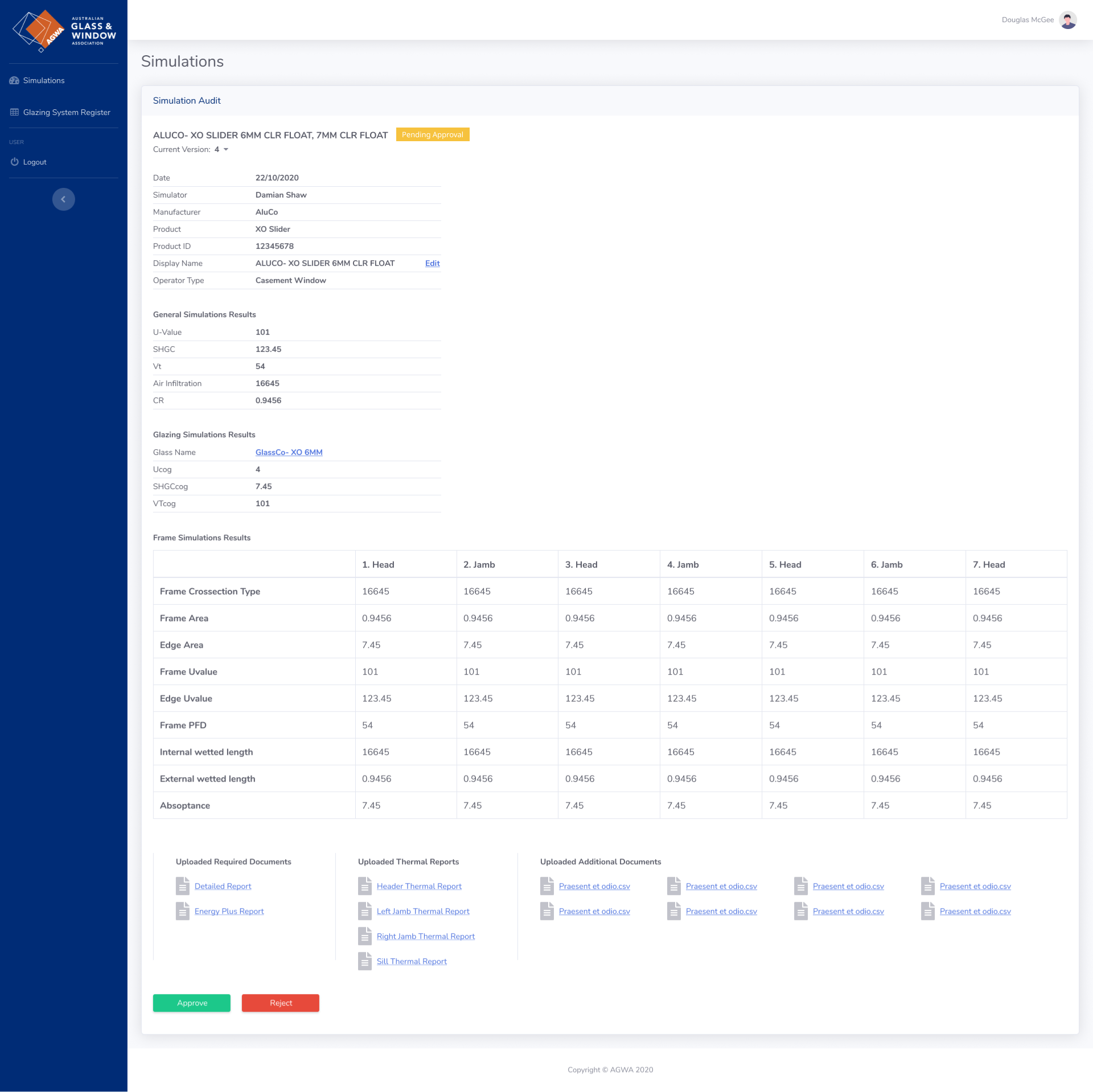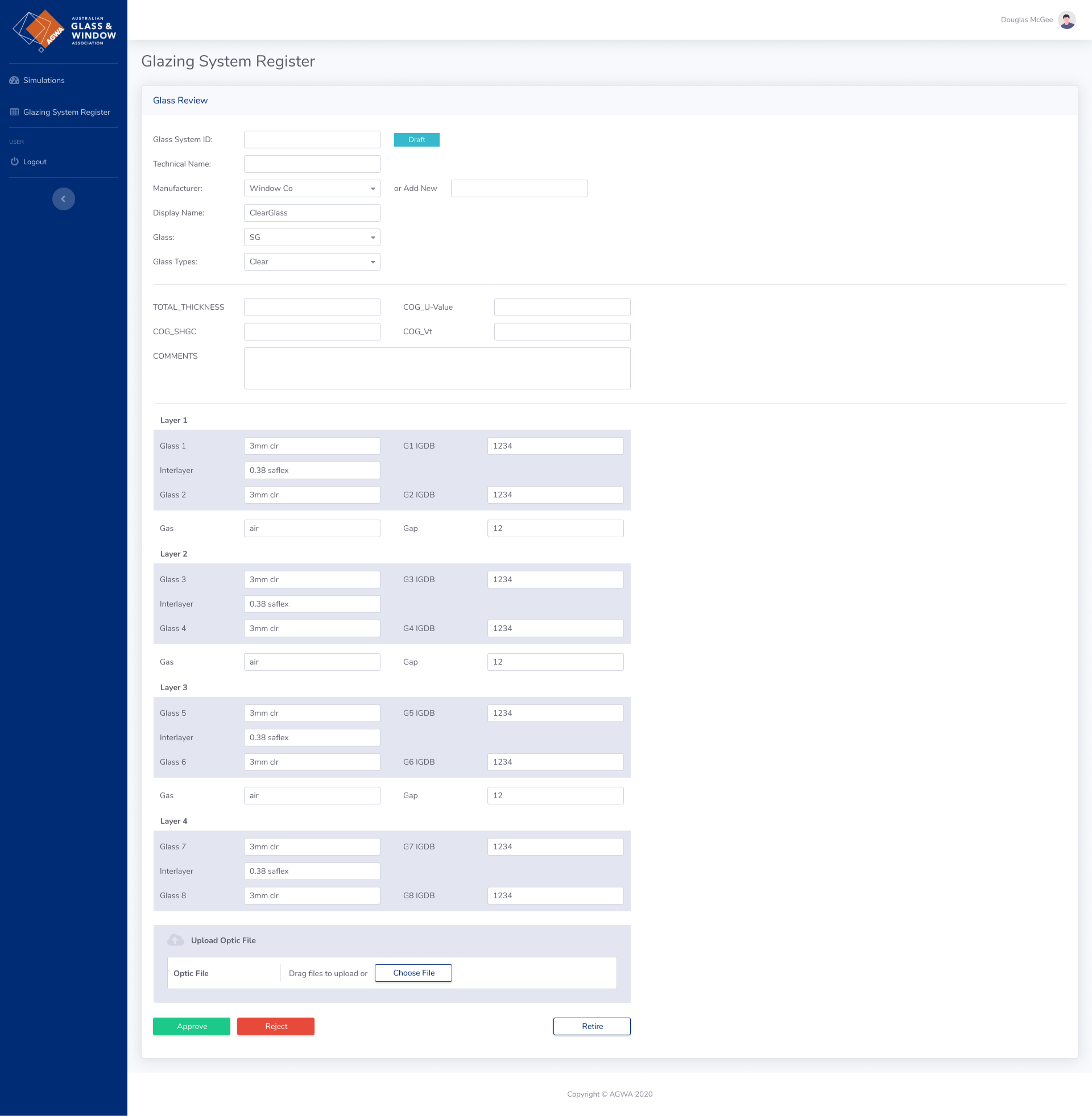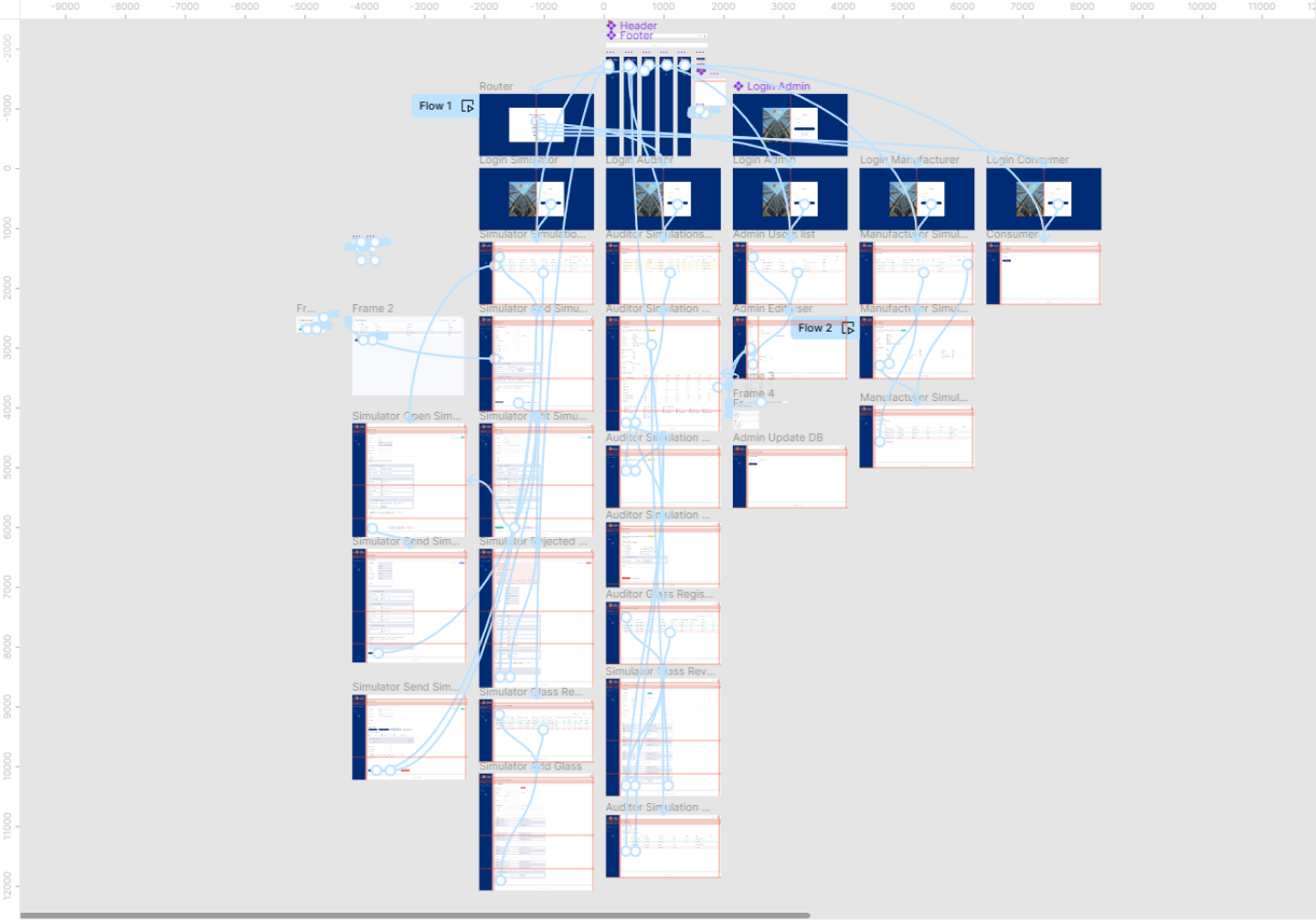AGWA Web App
Web application for Australian Glass and Window Association
My Role
User Interviews, Wireframes, Workflows, Prototyping, Visual Design
Practices
Human-Centered Design Methods, In-person Interview, User Testing
Team
Project Manager, UX/UI Designer, 3 Engineers, QA Test Analyst
Tools
Figma, Miro

What is AGWA application?
A web application for members of the Australian Glass and Window Association to use in window performance data calculations.
The purpose of the application is to facilitate providing Performance Data to end consumers of this data, such that they can display and calculate either:
- Performance Data for Window of a set configuration and size
- Performance Data for Window of a set configuration at a different size
- Performance Data for a Window of a custom configuration
High level requirements
- The solution is to allow upload of manufacturer test data (simulation reports) from the internal client’s software that provides flat text file - test reports of window performance characteristics, along with supplementary data.
- This data needs to be stored in a database, and allow for versioning of that data.
- Exports approved data into several formats to allow the consumers of the data to perform various use cases.
- Having security to ensure role & organization-based access to that data.
- Functionality for bulk import/migrate historical data.
Key Features
During the interview process for the AGWA project, we conducted several discussions with key stakeholders, including auditors and glass manufacturers, to gather insights into their needs and expectations for the web application. This helped identify essential functionality for the platform. The outcomes of these discussions led to a clear understanding of the following key features:
- Login/Access control
- Manufacturer and consumer maintenance
- Add new simulation data
- Extract data sets
- Calculate Energy Star Ratings
- Review
- Approval, Rejection
- Update existing simulation data
- Version update
- Product data update
- Simulation data viewing (Admin, Manufacturer, Consumer view)
- Simulation data search
- Flat file export
Information architecture
We organized the application into distinct sections based on user roles, such as data management for manufacturers and performance data viewing for consumers. This structure allowed users to quickly find the tools and information relevant to their tasks. A well-planned hierarchy of pages and features streamlined workflows, making the application more intuitive and efficient to use.
Wireframes and Prototype
I used Axure to create wireframes and prototypes, allowing us to visualize the application’s structure and user interactions early in the process. The wireframes provided a clear layout of key features, such as data upload, performance calculations, and role-based views. Prototyping enabled us to test navigation flows and gather feedback from stakeholders before moving into full development. This approach ensured that the design met user needs and functioned as intended, reducing the need for significant changes later in the project.
Figma Prototype
I’ve created a clickable Figma prototype to test user workflows and ensure the UX and usability were seamless. This allowed users to interact with the design, simulating real tasks like data uploads and performance calculations. Through testing, we identified and resolved any issues early, ensuring that all workflows were smooth and intuitive before moving to development.
Feedback and impact
We received positive feedback from customers through usability testing and user interviews. Users appreciated the intuitive design, smoother workflows, and improved functionality. This feedback validated our design choices and helped us identify areas for further refinement.
Reduced assessment time
The new system makes it easy for users to assess simulations and glass data. Now, it's displayed in a clear, informative, and user-friendly way, which saves time.
Reduced communication time
Notifications and automatic emails have helped create fast communication between assessors and manufacturers.
Flexibility for data consumers
With the new permissions system, consumers of simulation data get the important information in a format that's specific to them.
